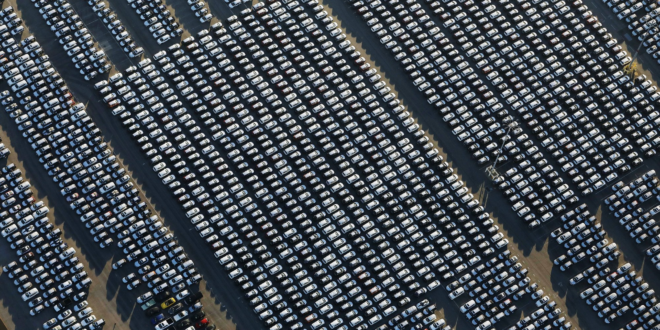After two-plus years of preparation, President Donald Trump tweeted Wednesday that the federal Environmental Protection Agency would revoke California’s ability to set its own fuel efficiency rules—a power that the state has used for decades to strong-arm automakers into building more efficient vehicles. According to the EPA, an official announcement will come Thursday.
Revoking the waiver, if the administration ultimately succeeds, would be the first step in a nationwide rollback of standards for greenhouse gas emissions and fuel economy. Since the 2016 election, the administration has made clear that it hopes to repeal rules created by the Obama administration that would require automakers to gradually increase their fleetwide fuel economy through 2025. The Obama-era rules are the result of a haggling process between multiple automakers and agencies back in 2009, just after the administration bailed out car companies during the financial crisis. California agreed to those rules too. But now the government wants to undo that agreement, and California officials are not likely to go along.
Trump said his plan would make cars “far safer and much less expensive.” Environmental and consumer groups dispute that conclusion: An analysis by Consumer Reports suggests new rules would increase fuel costs for consumers and lower auto sales over the long term by reducing consumers’ spending power. In addition, the proposed revocation would not improve highway safety—and perhaps even lead to an increase in road deaths.
Before any rules can take effect nationwide, the administration first needs to strip California of the special power to set its own. For nearly 50 years, provisions in federal environmental legislation have allowed the Golden State to ask Washington for waivers to set its own emission rules. Since the 1970 Clean Air Act, which officially recognized California’s lead in addressing air pollution, the feds have given the state about 40 waivers. Thirteen other states—about a third of the US auto market—follow California’s rules too.
Acting under its current waiver, which was granted in 2014, California regulators forged a deal in July with four automakers—BMW, Ford, Honda, and Volkwagen—that would largely cleave to the Obama-era rules through 2026. Trump was reportedly furious about the agreement, and tweeted that “Henry Ford would be very disappointed” in the decision. Earlier this month, the Justice Department launched an antitrust probe into the automakers for alleged anticompetitive actions in agreeing with the state.
Conventional wisdom says businesses don’t like regulation, even if it aims to achieve other goals, like saving the planet. (Twenty-nine percent of US greenhouse gas emissions come from the transportation sector, and nearly 60 percent of those are from passenger cars.) But in a letter sent to the White House in June, 17 major car companies, including Ford, GM, Mercedes-Benz, Toyota, and Volkwsagen, said they really, really wanted a “unified standard”—that is, emissions rules that everyone could agree upon. Such a rule “would provide regulatory certainty and enhance our ability to invest and innovate by avoiding an extended period of litigation and instability,” the automakers wrote. In other words: Please stop fighting; it confuses the work for everyone. Automakers plan new models years in advance, so they have serious incentive to clear up confusion about future rules right now.
The split between California and the federal government, then, puts carmakers in a difficult position. It would be easier for them if disagreements between state and national regulators didn’t split the market in two. It would also be easier if regulators tempered their emissions expectations. Above all, they want the whole thing settled—and soon.

